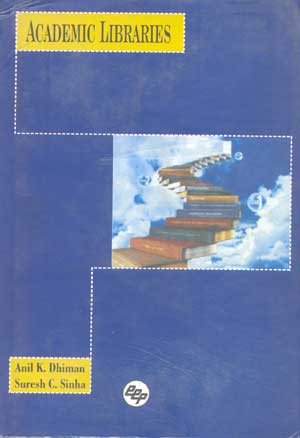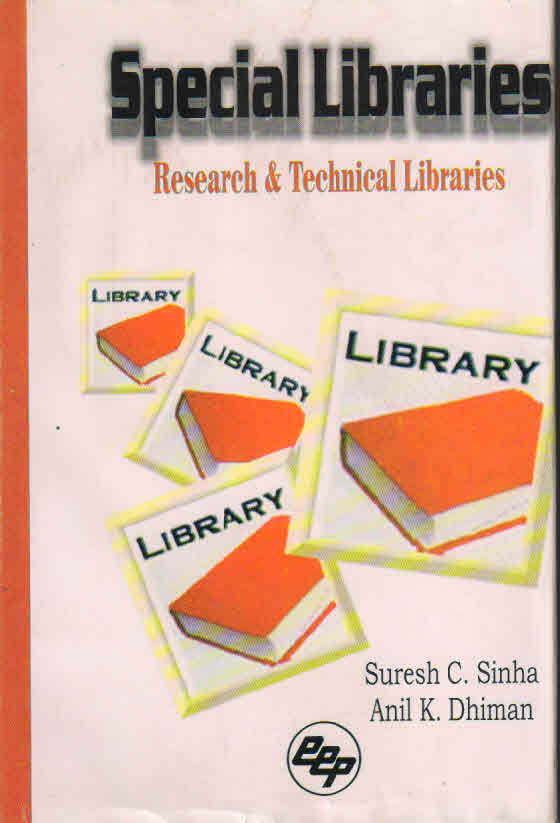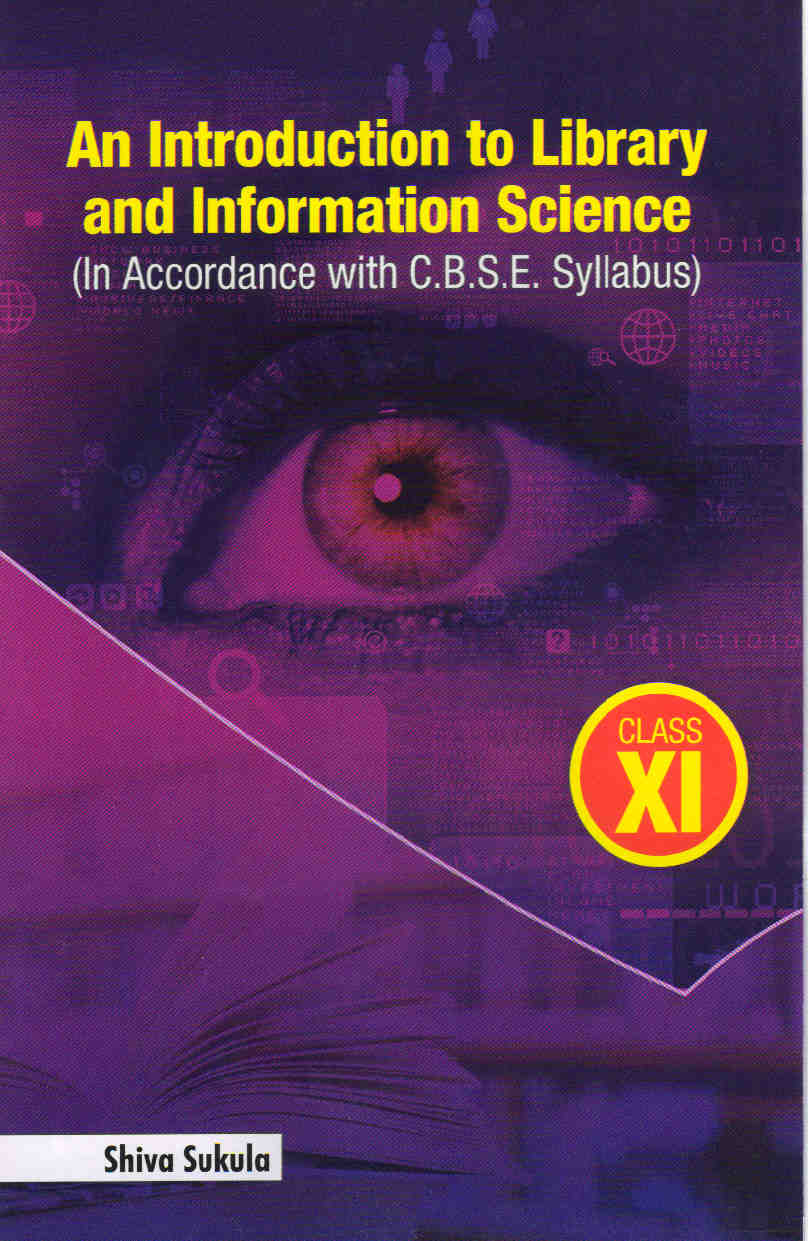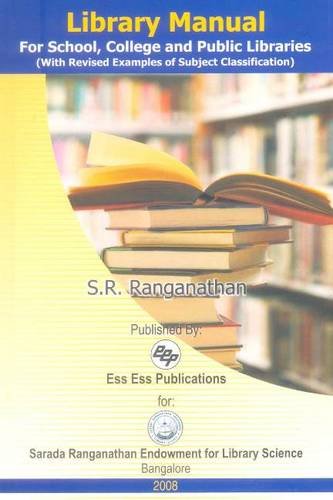In India there has been rich tradition in the humanistic scholarship, as well
as a great deal of interest in western thought and studies. There are about 400
institutions (government/private) working in different areas of the humanities,
wit which a great number of scholars are associated Despite their hostage
and collection, these institutions do not have the capability to meet the needs
of scholars in providing proper access to their resources. Resources are
scattered thought the country and for want of adequate bibliographic control and
means of access to them for scholarship who may be working far away, them remain
hidden and untapped. Thought there are a large number of humanities
institutions. there is no co-ordinating a agency at the national level. In the
absence of such a body, there is unnecessary duplication in terms of money.
energy and time Hence, a National Documentation Centre for the Humanities (NDCH)
has been proposed on the pattern of Indian National Scientific Documentation
Centre and National Social Science documentation Centre. The book is divided
into five chapters; each chapter is divided into sections covering various
aspects-definition and description of the humanities, the humanities information
use studies, the humanities libraries/ institutions and their resources and
services, information needs and use patterns in the humanities and design.
objectives, function/services of the proposed NDCH. It is hoped that this book
is useful to the scholars, librarians , administrators and intelligent lay men
Preface
Acknowledgement
Foreword
1. Humanities Definition and Description
2. Humanities Information Usestudies : A Review of the literature
3. Library Resources and services in the Humanities
4. A Survey of Information Needs and use in the Humanities
5. National Documentation centre for the Humanities
LIST OF TALES
1. Table 3.1 Data on the Libraries that Responded
2. Table 3.2.1 Sources of Grants (1991-91)
3. Table 3.3 Allocation of Budget to Different Items
4. Table 3.4 Library Collection (1990-91)
5. Table 3.7 Periodical Collection
6. Table3.8 Common Periodicals Subscribed to by ASRC, CIEFL and CIIL
(1990-91)
7. Table 3.9 Membership of the Libraries (1990-91)
8. Table 3.10 Libraries Services
9. Table 3.11 Library Utilizations: Daily Statistics
10. Table 3.12 Inter-library Loan Facility
11. Table 3.13 Technical Processing
12. Table 3.14. Preservation Techniques
13. Table 3.15. Computer Application
14. Table 3.16 Problems Confronting of the Libraries
15. Table 4.1 Institution -wise Distribution of the Respondence
16. Table 4.2 Age-wise Distribution
17. Table 4.3 Sex-wise Distribution
18. Table 4.4 Work Experience
19. Table 4.5 Nature of Work
20. Table 4.6 Wualifications
21. Table 4.7 Subject Interests
80 Table 4.8 Involvement in Research
31. Table 4.9 Purpose of Research
32. Table 4.0 Nature of Research
33. Table 4.11 Type of Research
34. Table 4.13.1 Sex-wise Distribution of Respodents Who published
35. Table 4.13.2 Respondents and Types of Publications
36. Table 4.14 Total Number of Publications: All User Groups
37. Table 4.15 Nature of Information Required
38. Table 4.15.1 Application of Chi-square Test
39. Table 4.16 Purpose of which Information is Required
40. Table 4.16.1 Application of Chi--Square Test
41. Table 4.19 Frequency of Library Visits
42. Table 4.19.1 Application of Chi-square Test
43. Table 4.20 Time Sent in the Library
44. Table 4.21 Rating of Sources Used to Obtain Information
45. Table 4.22 Library Services Used
46. Table 4.22.1 Application of Chi-square Test
47.Table 4.23 Adequacy of Library Stock
48. Table 4.23.1 Adequacy of Library Stock: Institution wise
49. Table 4.25 Problems Faced
50. Table 4.25.1 Problem faced: Institution-wise
51. Table 4.26 General Cited as Most Used
52. Table 5.1 Periodical (Language-wise) Published in the field o Humanities
in India(1986-87)
53 Table 5.2 Student Enrolment in Indian University Faculty-wise
(1986-87to1990-91)
54. Table Research Digrees Awarded in Foreigh Language in India upto 1990
55. Table 5.5 Services and Functions of National Centre, regional
Centres and Local Centres
LIST OF FIGURES
1. Figure A- Inter Library Loan
2. Figure B-Institution-wise Respondents
3. Figure C-Structure of NDCH
LEST OF APPENDICES
1. Appendix- A
2. Appendix-B
3. Appendix- C
4. Appendix-D
INDEX
Dr. M Kanakachary obtained B Com. from Osmania University; BL Sc from
Jabalpur University , MA (with gold medal) form Kakatiya University; MLISc, PG
Dip (Sanskrit) and Ph. D from Andhra University. He joined the library and
information science profession in 1982. He worked for some time in Kakatiya
University and in Telugu University
Dr. Kankachary co-compiled and co-edited two books: Tribal Linguistics in
India: A Bibliographical Survey of International Resources (1990) and
Documentation ad Bibliography control of the Humanities in India (1992).He has
published 70 articles and has presented several papers at national and regional
seminars. He is currently working on International Bibliography of
Dravidian Languages and Linguistics (Vol.-III: Telugu Language and Linguistics)
co-compiler) and Biographical Dictionary of Library and Information
Science in India (co-editor)
Dr. Kanakachary has been teaching the BLISc and CLISc course (on part-time
basis) for some years now. He is a Life Member of AGLIS, ALSD, APLA IASLIC,
IATLIS and ILA.









